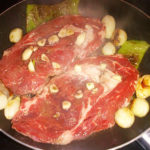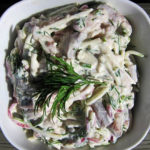When considering the different types of menus, the practical importance of stews should also be clarified.
The name of the stew is derived from this, that all the ingredients of a given dish are cooked in one pot. We usually use this type of meals in difficult living conditions, namely:
1) when we have too little fuel or only one gas burner or an electric or spirit machine;
2) when we have too few dishes for cooking and serving food;
3) when we have too little time at our disposal (periodic or permanent robots absorbing daily activities);
4) when we have a limited number of products at our disposal.
In order for one-pot dishes to be the main dinner meal, they should contain one representative of each 9 product groups. Because in the practice of cooking, such an assumption is often unrealistic, Due to the possibility of distorting the proper taste of the dishes - we supplement single-pot dishes with appropriate additives before serving, so that the composition brings them as close as possible to the menus 2 — 3 dishes and keep their proper taste and portion size. So that the meal's value and caloric content are preserved, we must proportionally increase the weight of the products. For this reason, it should be present in one-course dishes:
1) one protein product in the form of: meat, haha, will be, cold cuts, fish, soybeans etc.;
2) mixed vegetables - mainly root and leafy vegetables and legumes;
3) flour products in the form of flour, groats, pasta, dumplings or bread;
4) fat in the form of butter, cream, lard, lard, margarine, oil etc.;
5) fruit or vegetables in the form of salads as an addition to dishes;
6) green spices and natural acids, e.g.. (sauerkraut juice, pickled cucumber juice, beet, etc.) - as a complement to the mineral value, vitamin and taste of the dishes.





